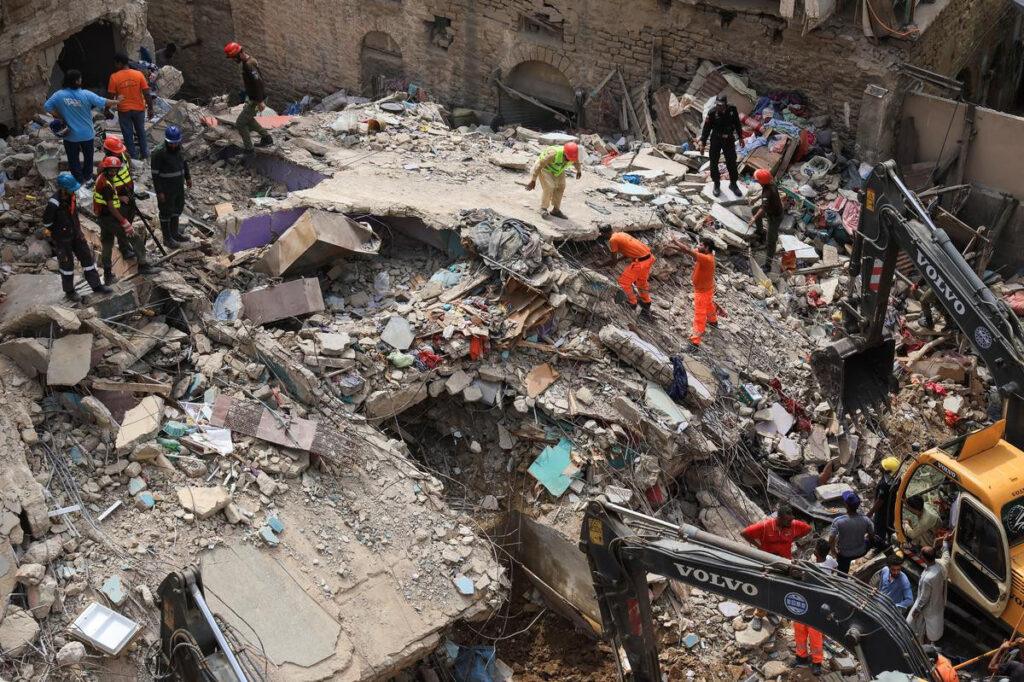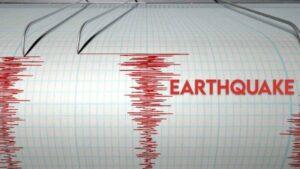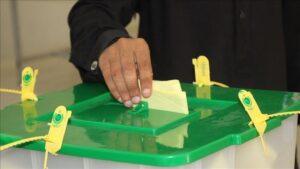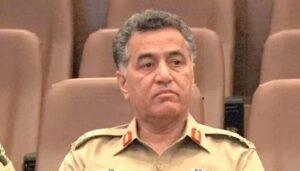Posted on July 13, 2025
Karachi:
The collapse of a five -story residential building in the Baghdadi area of Lyari on July 12, which charged at least 27 lives and has injured many more, has once again exhibited deep rot in urban governance and Karachi disaster preparation.
Despite the official warnings, the building remained busy. Their eventual collapse met with chaos scenes, a delayed rescue effort and overwhelmed them to emergency responders who sailed through narrow alleys with inappropriate equipment.
While volunteers and rescuers did the best that could be in terrible circumstances, the tragedy stressed a gloomy reality: if a crumbled structure can stretch the Karachi rescue system to its limits, what would happen in case of an important earthquake or emergency throughout the city?
Inadequate rescue and relief system
In the case of an important earthquake or any natural disaster that causes the collapse of multiple buildings in Karachi, the city’s rescue and help infrastructure is alarmingly insufficient. At the provincial, district or municipal level, there is practically no comprehensive or fully functional disaster management system.
Currently, under KMC and Rescue 1122, only two urban search and rescue wings (use) are active in Karachi. These wings comprise more than 150 trained personnel, but are equipped with machinery and limited resources. There is no disaster management department at the district level, or any communication system established between several rescue and help organizations. This lack of coordination was evident during the recent tragedy of Lyari, where delays and poor management were reported during rescue operations.
Illegal construction and bad regulations
Mohammad Tauheed, urban planner and director of Karachi Urban Lab (IBA), citing media reports, shared that a five -story building collapsed in Baghdadi, Lyari, killing 27 people and hurting nine. He stressed that Karachi has become a jungle of illegal constructions in the last two decades, and they continue without control.
The most dangerous trend, he said, is the construction of illegal floors of several floors in small plots of 40, 60 or 80 square yards, often with multiple narrow portions per floor, some so poorly designed that natural light and ventilation are non -existent.
The Lyari rescue operation took more than 50 hours to complete. Tauheed said that with the estimated population of Karachi about 30 million. At the same time, the official census places it in 20.3 million, the rescue and help capabilities of the city are dangerously inappropriate due to their size and density.
A city at seismic risk
Karachi recently experienced mild tremors, which did not cause harm, but the seismologists warn about the possible strongest earthquakes. If multiple buildings collapse, the absence of a functional mechanism for disaster response at the city or district level would mean a disaster. Use and other facilities are insufficient. The equipment is missing, the personnel number is low and any large -scale catastrophe could take days or weeks to be administered.
Tauheed recommends that a disaster management authority be established at the city level (TDMA) in each of the 25 Karachi cities. This would allow a localized and fast response. In addition, all rescue personnel must be trained to international standards, and KMC must house a central disaster management unit that coordinates with the municipal authorities.
’60, there are 000 illegal buildings’
The president of the Association of Builders and Developers (ABAD), Hassan Bakhshi, estimated that there are 60,000 buildings illegally built in Karachi, and more than 600 structures are dangerously ruin. He requested more strict laws and an effective implementation to stop illegal constructions. He also expressed his willingness to support any government initiative to reassure the residents of insecure buildings.
Bakhshi revealed that between 2017 and 2025, Karachi witnessed 12 construction collapses, claiming around 150 lives. He identified two main causes: structurally insecure buildings (in ruins) and illegal constructions. “When a building declares himself insecure, the owner of the plot benefits this perverse incentive; this must end,” he warned.
He proposed a three -phase action plan, a structural survey of the entire city made by independent experts, immediate repair of recoverable buildings and the reconstruction of those beyond repair under a strict legal obligation. Bakhshi claimed that around 85,000 buildings in Karachi have extended illegally, blaming the control authority of Sindh (SBCA) and municipal organisms for facilitating corruption. He warned that the city could face a catastrophe if an earthquake attacked, given poor quality and insecure structures. Calling SBCA a “corruption symbol,” demanded that the authority be divided into two departments, engineering and approvals, and urged that cases against confirming and negligent officials be heard in the anti -terrorist courts due to the potentially mortal implications of their actions.
Referring to Lyari’s tragedy, Abad demanded, rs. 2.5 million in compensation for the families of the deceased, rs. 1 million for those who left homeless and an independent investigation, excluding SBCA and municipal officers. Abad also offered to help Sindh’s government identify and rehabilitate insecure structures. Bakhshi further criticized Malir’s development authority (MDA) for collecting RS. 25 billion without delivering plots in 30 years.
Reaffirming Abad’s commitment, Bakhshi declared: “We are ready to rebuild all ruins in 700 days,” and urged Sindh’s government to launch housing schemes similar to those announced in Punjab.
The senior vice president of Abad, Syed Afzal Hameed, echoed these concerns, citing administrative negligence at the Collapse site of Lyari and the boom without control of illegal constructions even in areas of acantonation. They also lent alarms about Karachi’s master plan, the corruption of the land and judicial inaction, warning that without bold and systemic reforms, the city’s housing crisis will only deepen.
KMC response: limited but modernizing
KMC’s fire chief and rescue, Humayun Khan, declared that after the collapse of Margalla Towers of 2005 in Islamabad, the Use units were formed throughout the country. The team using Karachi, a collaboration between KMC and NDMA, was the first to meet international standards.
The team includes 88 trained personnel, equipped with radars, sensors and life detection cameras to locate the survivors trapped under the rubble. Its headquarters also houses a training school and three subunits, with the support of more than 200 volunteers. KMC has five snorkers to rescue people trapped in high laughs and is expanding their services under Mayor Murtaza Wahab.
Rescue 1122: Working to international standards
Spokesman Hassan Ul Haseb de Rescue 1122 Sindh explained that his urban search and rescue wing operates under the UN international guidelines. Punjab’s 1122 team was the first in southern Asia to be certified worldwide.
Karachi use 1122 includes 55 personnel, led by Commander Dr. Abid Jaluddin Sheikh, a worldwide certified coach. In Lyari’s tragedy, his team directed operations using advanced tools such as search cameras, life detectors and radar -based systems to detect and rescue trapped people. The equipment also uses cutting tools, hydraulic equipment and exercises for debris elimination.
Imran-Ul-Haq, head of rescue operations in a local welfare organization, said the lack of coordination between rescue agencies during large disasters. He emphasized the need for a centralized communication system between all government and private rescue services, citing Lyari incident as an excellent example of this failure.
Currently, more than 1,500 ambulances operate in Karachi, directed by a mixture of government and private organizations, but without a unified response protocol.
A spokesman for the local government department of Sindh revealed that 588 buildings in Karachi have been officially declared dangerous. However, residents are reluctant to vacate. The government is working on a policy to relocate these residents and increase rescue and help capabilities throughout the city.




